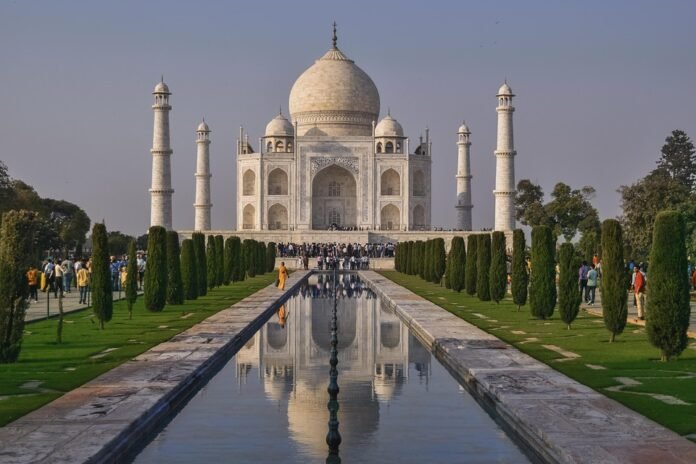Of course! Here is an article on Sustainable Tourism in India.
Sustainable Tourism in India: A Path to Preserving Culture and Protecting the Environment
From the snow-capped peaks of the Himalayas to the sun-drenched backwaters of Kerala, India offers a kaleidoscope of experiences that have captivated travelers for centuries. This immense popularity, however, comes with a profound responsibility. As millions flock to its ancient monuments, vibrant cities, and pristine natural landscapes, the country stands at a critical crossroads. The path forward lies in sustainable tourism—a model that seeks to enrich the traveler’s experience while preserving the very culture and environment that make India so unique.
The Double-Edged Sword of Tourism
For decades, tourism has been a powerful engine for economic growth in India, creating jobs and bringing in foreign exchange. But unbridled mass tourism has often left a deep scar. Popular hill stations like Shimla and Manali grapple with plastic pollution and strained water resources. Fragile ecosystems in Ladakh and the Western Ghats face pressure from unregulated trekking and construction. Culturally, the risk of "commodification" is real, where ancient traditions are diluted into sterile performances for a quick tourist dollar.
Recognizing this, a paradigm shift is underway. Stakeholders—from government bodies and private enterprises to local communities and conscious travelers—are championing a more responsible approach. Sustainable tourism is no longer a niche concept but an essential strategy for India’s future.
Pillar One: Protecting the Planet’s Treasures
India is one of the world’s most biodiverse countries, and its natural heritage is its greatest asset. Sustainable tourism places environmental protection at its core.
1. The Rise of Eco-Lodges and Green Hospitality:
Across the country, a new breed of accommodation is taking root. In states like Kerala, Uttarakhand, and Karnataka, eco-lodges built with local, sustainable materials are becoming popular. These establishments often run on solar power, practice rainwater harvesting, manage their waste responsibly, and offer organic, locally-sourced food. They provide luxurious comfort without compromising the health of the surrounding ecosystem.
2. Responsible Wildlife Tourism:
India’s national parks, home to iconic species like the Bengal tiger, one-horned rhinoceros, and Asiatic elephant, are epicenters of conservation. Sustainable wildlife tourism ensures that safaris are conducted ethically. This means adhering to strict park rules, maintaining a safe distance from animals, and using trained naturalists who educate visitors about the importance of conservation. The revenue generated from these well-managed parks is often funneled back into anti-poaching efforts and habitat restoration, making tourists active partners in protecting wildlife.
3. Community-Led Conservation:
In many regions, local communities are the most effective guardians of the environment. In Sikkim, India’s first fully organic state, a ban on plastic bags and a focus on community-based ecotourism have preserved its pristine mountain landscapes. In Rajasthan, the Bishnoi community has practiced environmental stewardship for centuries, and their villages offer a powerful lesson in harmonious coexistence with nature.
Pillar Two: Preserving the Soul of India—Its Culture
India’s culture is a living, breathing entity, found not just in its monuments but in its villages, its art forms, and its people. Sustainable tourism aims to foster authentic cultural exchange that benefits everyone.
1. The Homestay Revolution:
Moving away from impersonal hotel chains, travelers are increasingly opting for homestays. In regions like Ladakh, Spiti, and the villages of Rajasthan, families open their homes to visitors. This model offers a win-win scenario: travelers get an unfiltered glimpse into local life, enjoying traditional meals and stories, while the host family earns a direct and dignified livelihood. This income incentivizes the preservation of traditional architecture, cuisine, and customs.
2. Championing Local Artisans:
Sustainable tourism encourages travelers to buy directly from artisans, ensuring that money flows into the local economy. Instead of mass-produced souvenirs, visitors can purchase a hand-woven shawl from a weaver in Kutch, a Madhubani painting from an artist in Bihar, or a wooden toy from a craftsman in Channapatna. Initiatives like craft villages and platforms such as Dastkar connect tourists with genuine creators, helping keep ancient skills alive.
3. Rural and Agri-Tourism:
To truly understand India, one must experience its villages. Agri-tourism invites visitors to stay on farms, participate in agricultural activities, and learn about traditional farming practices. This not only provides an alternative income stream for farmers but also helps preserve rural lifestyles and fosters a deeper appreciation for the food on our plates.
The Road Ahead: Challenges and Opportunities
The path to fully sustainable tourism is not without its obstacles. "Greenwashing"—where businesses falsely market themselves as eco-friendly—remains a concern. Ensuring that regulations are enforced and that the benefits of tourism reach the most marginalized communities requires constant vigilance.
However, the opportunities are immense. The Indian government’s "Swadesh Darshan" scheme, which focuses on developing theme-based tourist circuits, increasingly incorporates principles of sustainability. A growing global consciousness means that modern travelers are actively seeking out meaningful and low-impact experiences.
The future of tourism in India lies in this symbiotic relationship. It’s a journey where a traveler leaves a place better than they found it, not just through their spending but through their respect and understanding. By choosing to travel consciously, we can all become guardians of India’s incredible heritage, ensuring that its cultural tapestry and natural wonders continue to thrive for generations to come.

